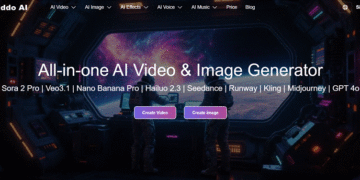Designing an effective checkout process is crucial in today’s fast-paced digital environment, especially for users with attention spans under 10 seconds. Quickly capturing attention and streamlining the experience are key to reducing cart abandonment. With Antom’s Checkout Payment, your website or app can securely accept a variety of online payments—including e-wallets, bank transfers, and credit cards—through a single integration across desktop and mobile platforms.
To optimize checkout design, prioritize simplicity and speed. Essential features enhance user experience and keep customers engaged, ensuring they complete their purchases smoothly. Transform your checkout process into a seamless journey that meets the demands of today’s impatient shoppers.
Importance of Checkout Design
Checkout design significantly impacts user retention and sales conversion. For users with short attention spans, each second counts. Creating a streamlined checkout experience captures their focus and minimizes distractions.
Key aspects affecting checkout design include:
- Simplicity: Limit the number of steps in the checkout process. Fewer steps decrease frustration and keep users engaged.
- Visual Clarity: Use clear labels for actions such as “Add to Cart” and “Checkout.” Confusing buttons lead to abandonment.
- Progress Indicators: Displaying a progress bar reassures users about their current position. This simple feedback encourages completion.
- Mobile Optimization: Ensure that the checkout process works seamlessly on mobile devices. Mobile users represent a significant portion of online traffic, and optimizing for them reduces drop-off rates.
Consider these questions to refine your design:
- What tasks could be removed to simplify the process?
- How does the visual design guide the user’s journey?
Examining customer feedback can reveal pain points in the checkout process. Regular updates based on user data enhance the overall experience.
Understanding Attention Spans
Attention spans have significantly decreased in the digital age. The average attention span has diminished from 2.5 minutes in 2004 to 47 seconds today.
Characteristics of Short Attention Spans
Users with limited attention frequently display specific behaviors:
- Focus on fewer product options, simplifying selection.
- Seek key visual elements to aid quick decisions.
- Prefer easily recognizable cues that minimize cognitive overload.
Such behaviors lead to increased distractions and a tendency to overlook cluttered interfaces.
Implications for E-commerce
E-commerce designs must account for these fast-paced behaviors.
- Implementing minimalist interfaces reduces distractions.
- Using clear visual cues improves navigation efficiency.
- Presenting vital information prominently builds trust quickly.
Responsive designs that load swiftly keep users engaged and lessen frustration. To boost conversions, prioritize creating streamlined, user-centric checkout experiences.
Elements of Effective Checkout Design
Effective checkout design addresses the needs of users with short attention spans. Key components impact usability and conversion rates.
Simplified Navigation
- Minimize steps in the checkout process. Fewer steps make it easier for users to complete purchases.
- Eliminate unnecessary fields. This reduces distractions and keeps users focused.
- Offer clear labels. Users process information quickly with intuitive labels for actions.
Visual Hierarchy and Layout
- Employ a structured layout. A clear visual structure guides users seamlessly through the checkout.
- Highlight calls-to-action. Prominent buttons enable quick decision-making.
- Keep the layout clean. An organized interface reduces cognitive load, allowing users to concentrate on essential tasks.
Strategies for Capturing Attention
Use of Color and Contrast
- Choose high-contrast colors for call-to-action elements to improve visibility.
- Maintain consistent color themes that guide users’ eyes toward important buttons.
- Use whitespace effectively to give form fields room to breathe, helping users process information quickly.
- Ensure that text stands out against backgrounds, making it easy to read.
Engaging Call-to-Actions
- Utilize clear, action-oriented language on buttons, like “Complete Purchase” or “Continue to Payment.”
- Make buttons larger than standard text to attract immediate attention.
- Position CTAs strategically throughout the checkout flow to facilitate seamless progression.
- Experiment with different colors and placements to identify the most effective combinations for quick engagement.
Case Studies and Examples
Examples of effective checkout design illustrate the importance of quick decision-making.
- First Moment of Truth: This principle focuses on the initial encounter with a product. Highlighting key elements in the checkout process grabs attention immediately, guiding users toward actions necessary for completing a purchase.
- Streamlined Checkout: The 1-Click approach simplifies actions. When transactions occur swiftly and without unnecessary steps, users experience reduced friction.
Key Insights
| Strategy | Description |
|---|---|
| Simplification | Minimize steps to avoid overwhelming users. |
| Visual Clarity | Prioritize clear visuals to emphasize action items. |
| Engaging CTAs | Use bold buttons to attract attention. |
User data indicates that reducing checkout steps can significantly improve conversion rates. Each element’s visibility allows for faster comprehension and encourages user interaction. How can you apply these insights to enhance your checkout design?
Conclusion
In today’s digital landscape, creating a checkout design that caters to users with attention spans of less than 10 seconds is crucial. By prioritizing simplicity and speed, you can significantly enhance user experience and reduce cart abandonment.
Implementing clear visual cues and minimizing distractions will help guide users smoothly through checkout. Remember that every second counts; a streamlined experience captures attention, fosters trust, and encourages conversion.
Stay responsive to user feedback and continually refine your design. This approach will ensure your checkout process remains effective and meets the evolving needs of impatient shoppers. Focusing on these strategies will create a more engaging and efficient checkout experience that drives results.
David Prior
David Prior is the editor of Today News, responsible for the overall editorial strategy. He is an NCTJ-qualified journalist with over 20 years’ experience, and is also editor of the award-winning hyperlocal news title Altrincham Today. His LinkedIn profile is here.












































































